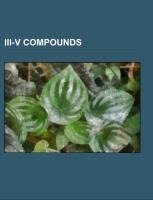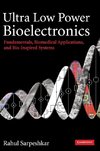
-
 Anglický jazyk
Anglický jazyk
III-V compounds
Autor: Source: Wikipedia
Source: Wikipedia. Pages: 29. Chapters: Aluminium antimonide, Aluminium arsenide, Aluminium gallium arsenide, Aluminium gallium indium phosphide, Aluminium gallium nitride, Aluminium gallium phosphide, Aluminium indium arsenide, Aluminium nitride, Aluminium... Viac o knihe
Na objednávku
14.85 €
bežná cena: 16.50 €
O knihe
Source: Wikipedia. Pages: 29. Chapters: Aluminium antimonide, Aluminium arsenide, Aluminium gallium arsenide, Aluminium gallium indium phosphide, Aluminium gallium nitride, Aluminium gallium phosphide, Aluminium indium arsenide, Aluminium nitride, Aluminium phosphide, Boron arsenide, Boron nitride, Boron phosphide, Gallium antimonide, Gallium arsenide phosphide, Gallium indium arsenide antimonide phosphide, Indium antimonide, Indium gallium arsenide, Indium gallium nitride, Indium gallium phosphide, Indium nitride, Nanomesh. Excerpt: Boron nitride is a chemical compound with chemical formula BN, consisting of equal numbers of boron and nitrogen atoms. BN is isoelectronic to a similarly structured carbon lattice and thus exists in various crystalline forms. The hexagonal form corresponding to graphite is the most stable and softest among BN polymorphs, and is therefore used as a lubricant and an additive to cosmetic products. The cubic (sphalerite structure) variety analogous to diamond is called c-BN. The hardness of the conventional form is inferior only to diamond, but when prepared with a nanostructure dominated by fine twin domains of average thickness ~3.8 nm its hardness exceeds that of synthetic diamond. Its thermal and chemical stability is superior to diamond. The rare wurtzite BN modification is similar to lonsdaleite and may even be harder than the cubic form. Boron nitride is not found in nature and is therefore produced synthetically from boric acid or boron trioxide. The initial product is amorphous BN powder, which is converted to crystalline h-BN by heating in nitrogen flow at temperatures above 1500 °C. c-BN is made by annealing h-BN powder at higher temperatures, under pressures above 5 GPa. Contrary to diamond, larger c-BN pellets can be produced by fusing (sintering) relatively cheap c-BN powders. As a result, c-BN is widely used in mechanical applications. Because of excellent thermal and chemical stability, boron nitride ceramics are traditionally used as parts of high-temperature equipment. Boron nitride has a great potential in nanotechnology. Nanotubes of BN can be produced that have a structure similar to that of carbon nanotubes, i.e. graphene (or BN) sheets rolled on themselves, however the properties are very different: whereas carbon nanotubes can be metallic or semiconducting depending on the rolling direction and radius, a BN nanotube is an electrical insulator with a wide bandgap of ~5.5 eV (same as in diamond), which is almost independent of tube chirality and m
- Vydavateľstvo: Books LLC, Reference Series
- Rok vydania: 2019
- Formát: Paperback
- Rozmer: 246 x 189 mm
- Jazyk: Anglický jazyk
- ISBN: 9781155830162











 Nemecký jazyk
Nemecký jazyk 
